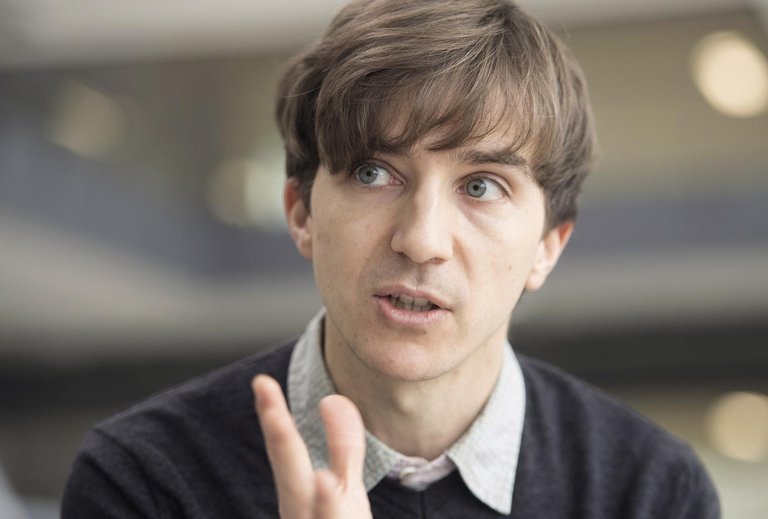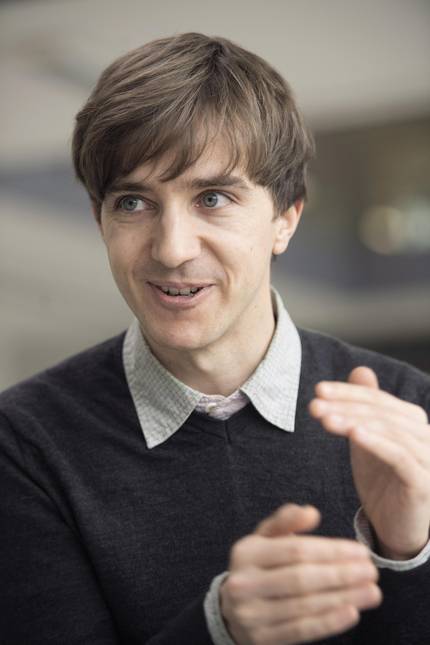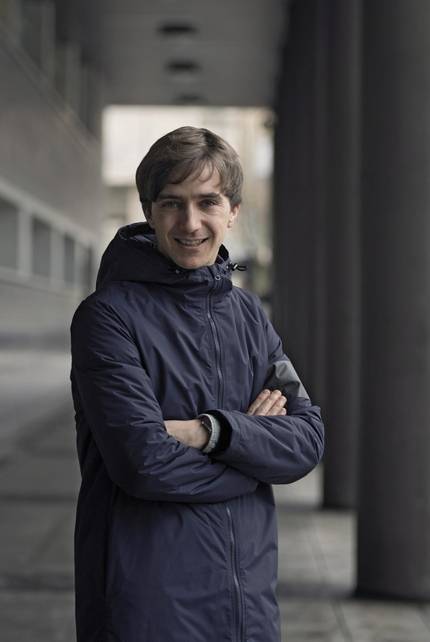“Experimental physicists need the work of these theoreticians. Without us they are blind”

The sensations are very varied. I have an incredible illusion, because I know that is going to make a big leap in my career: I have created my own research team, now I have resources for research, a great independence for the development of research… I will be able to be focused on research. But it is true that at the same time I have felt vertigo.
I will have to leave it largely. I like it a lot, but it is true that we have a great teaching load at the University of the Basque Country, especially when we are young. And now is the time to develop a good research tour, when we are between 30 and 40 years old, when we are full of illusion and desire to work. Here, however, we have difficulties in conducting a leading research. I think we would have to rethink these things.
Our goal is to predict which materials will be superconductors. Superconductivity is the property of certain metals and only in certain conditions: their electrons are placed by pairs and a sort of condensate is formed that can move without any resistance. They are, therefore, materials without any electrical resistance: they have a zero electrical resistance. This means that we can generate extremely large currents and transport them without losses. We can also create very strong magnets for many applications.
What happens is that at the moment the superconductors are only obtained at extreme temperatures, very cold, and the objective is to find superconductors at room temperature. It has been proven that compounds rich in hydrogen can be very suitable, for example, three or four years ago it was shown that a compound of hydrogen sulfide was a superconductor at -73 °C. Yes, you need a huge pressure: 150 gigapascal. But, at least, it shows that in these materials we can find good superconductors. That is our goal: to find high temperature superconductors among the compounds rich in hydrogen.
It is difficult to predict. In conventional cables, 9% of the energy we generate in the power plants is lost only in transport to reach our homes. If we take from the power plants to households with superconductive cables that can transport the current without losses, we would save that 9%. I think innovative companies are going to start incorporating superconductive cables into the new distribution networks.
In addition, there are already projects in which superconductor cables that are being introduced in the wind generators themselves can generate much more energy. At the moment they must cool at very low temperatures and, however, it is being said that they are already profitable.
But it would have to be seen in what other things this kind of material can be revolutionary. I think your biggest contribution can be the creation of electric motors, very powerful electric motors with superconductive cables. Who knows that the planes of the future will have electric motors manufactured with superconductors. This type of engines can give a great power, even to fly a plane. Current electric motors are not able to do so.
On the other hand, superconducting materials also allow levitation. If you put a superconductor on a magnet, levitate it as two magnets of the same charge. There are already trains made of superconductive materials that move slightly at high speed.
I'm a physicist, so I don't think of technology. I have clear the challenge of getting a superconductor material at room temperature and environmental pressure.
I think we will soon see some superconductor at room temperature, we can count the years with one hand. Recently an article has been published in which it is indicated that a compound of lanthanum and hydrogen has managed to be superconductor at a temperature of almost 260 °K. This is -13ºC, almost ambient temperature. But the pressures are still very high, almost 200 gigapascales are needed. There is the biggest challenge. Because you have to create and maintain these superconductive materials at very high pressures, that if you miss the pressure disappear.
Yes, two years ago, researchers from Harvard achieved for the first time the generation of metallic hydrogen. In 1968, Neil Anshcroft announced that this material could be superconductor even at high temperatures. But imagine the pressure needed to turn hydrogen into metallic! They have created it at a pressure of 500 gigapascal tablets in a diamond cell. That's a huge, much greater pressure than we have in the center of Earth!
But Ashcroft himself, right in San Sebastian, wrote in the Donostia International Physics Center, proposing an article that perhaps, beyond mere metal hydrogen, other compounds rich in hydrogen would also be superconductors at high temperature, but at lower pressure. And the search for them is the great current challenge. Having hydrogen and being in metal state is what you need to create superconductivity.
A good calculation tool has been created. In the last decade there have been numerous theoretical calculations and scientists are able to predict the properties of materials, even before they existed. This has meant a revolution and it has been seen that many materials can be superconductors at high pressure. What happens is that in all these calculations, some important effects were not taken into account: quantum effects. My contribution has been that: to develop a method that takes into account these quantum fluctuations. In fact, hydrogen is the lightest material, so quantum effects have a great influence on it and are very important to explain why the superconductivity occurs in the hydrogen sulfide, for example. This has positioned us well at the international level.
Yes, but the experimental groups take great advantage of the information provided by theorists. They need us. Without us they are blind. Experiments at high pressures are very expensive. As has already been indicated, for the formation of compounds of hydrogen sulfide, these are deposited in a diamond cell. They need a great pressure: they put two diamonds, one against the other, making pressure. Diamonds are constantly breaking, so these experiments are so expensive.
I am fascinated by the physics of matter. In short, all interaction is only an interaction of Coulomb between loads. All properties of materials, including superconductivity, are a consequence of this. We have ions and electrons in interaction. And we know what interaction is. But we have so many electrons and ions, where a great complexity arises. And many properties are created. But we know the interaction.
What happens is that we have to somehow simplify that great complexity that is generated. That is the equation we have to solve: How much can we simplify and yet remain accurate? The problem is that the approaches that have been made in the superconductive hydrogen compounds have not been good, while the more complex approaches that we have developed have been adequate to perform these calculations.
Yes, yes, the superconductivity will still give more than one Nobel prize. Those who get a superconductor at room temperature and environmental pressure will soon be replaced in Stockholm. And the same thing explains why superconductivity occurs in the cuprates, which is still a great mystery.
Oh, yes! The competition is good. Competition drives the acceleration of science, speed. Provided that it does not involve scientific neglect. I am very competitive.
Buletina
Bidali zure helbide elektronikoa eta jaso asteroko buletina zure sarrera-ontzian













